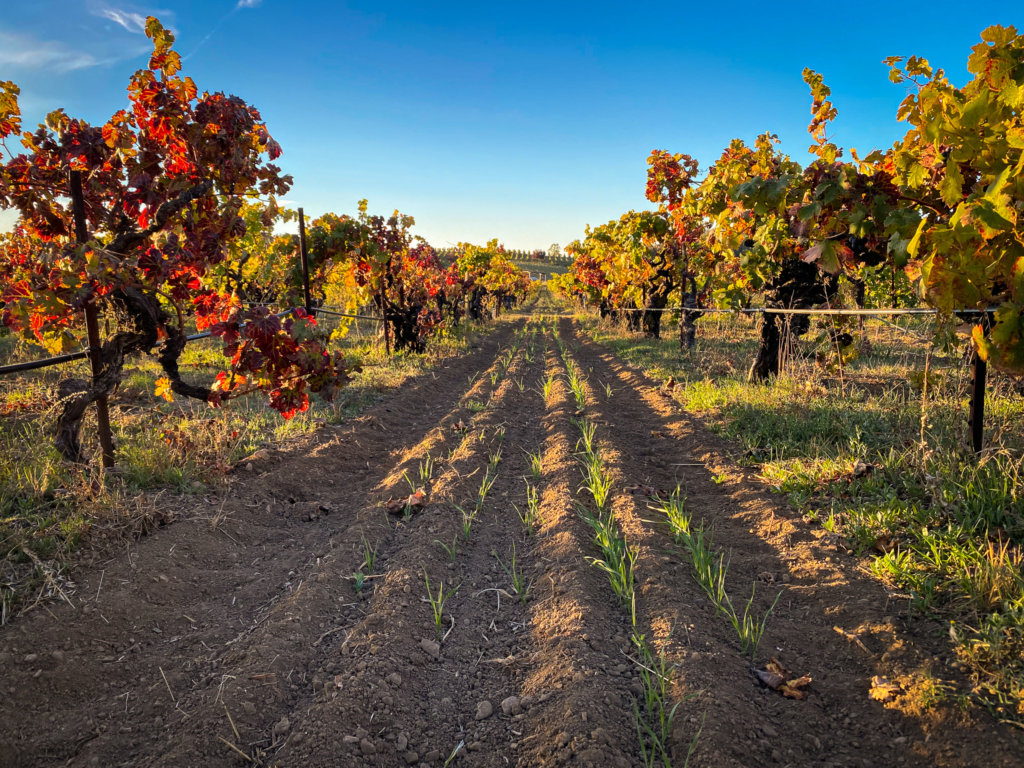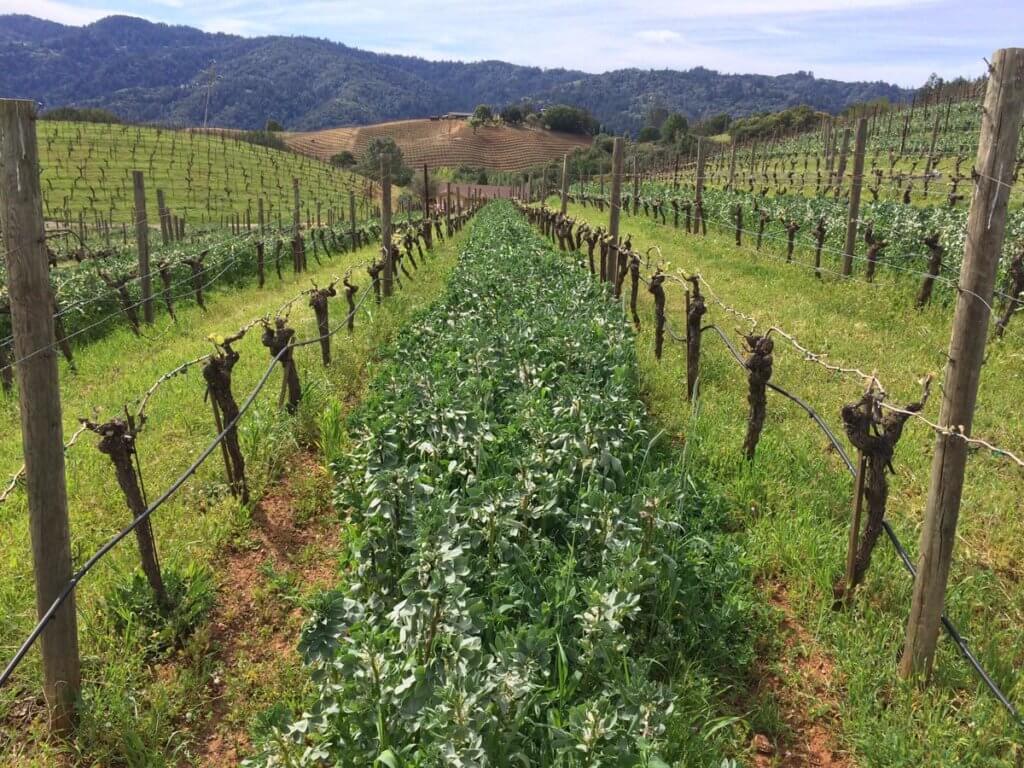Sowing Cover Crops after Harvest
Blog Post
November 2022
Each year we plan and prepare for harvest, but vineyard work does not end when the last grapes are picked. We are mesmerized by the colors of fall all around, and though it is quiet, cool, and hopefully wet, we continue farming with the goal of having a solid start to the following year when vines push from dormancy. How do we achieve this? Cover crops.
How do you tend the vineyards after harvest?
The most important task our vineyard crews tackle in the fall is sowing our organic cover crop mix. We begin preparing the soil after harvest by adding amendments based on soil analyses which inform us on what to apply. Compost applications are crucial for creating plant-based fuel, or biomass; they add organic matter and “give back” what we took this season. After the soil amendments are applied, we will cultivate the cover crop rows, which will help incorporate the amendments and loosen the soil so we can sow the seed.
What does Ridge plant in the vineyards?
The cover crop mix we use is made of peas, fava bean, and triticale. The peas and fava are both legumes, which fix high amounts of nitrogen due to their symbiosis with rhizobium. This means that not only are we getting biomass from the above-ground parts of these legumes, but also their deep roots with nitrogen-rich nodules will be broken down in the spring by microorganisms and taken up by the vines.
Triticale is a cross between rye and wheat, making it very good for biomass. It grows very well in the winter and has a deep and extensive root system which allows for better water penetration and retention, helps with weed suppression by out-competing them, and will provide lots of organic matter for the soil.
Finally, on certain blocks, we sow seed made up of many different flowering plants which will bloom from spring into late fall. These flowering plants will attract and provide food and habitat for many beneficial insects, many of which help us naturally control vineyard pests.
What happens after the cover crops are grown?
In the spring, when the cover crop for organic matter and nitrogen is in full bloom, we will mow and disk into the soil. Mowing cuts the plant material into small pieces which will allow microorganisms to break them down faster. As these materials break down, nutrients will be released and taken up by the vines. Having adequate moisture in the soil is crucial not only for the growth of this cover crop but also for the breakdown and release of nutrients in the spring. We have been blessed with cooler temperatures and good rain so far, and are hopeful that 2023 will be off to a great start.
Related Links
- Our Farming Practices
- Your Greatest Tool is Already in Your Vineyard
- Vineyard Soils & Their Importance

Stay up-to-date with the latest RIDGE news, wine releases, and special offers – join our mailing list.
Wait!
In order to qualify for user related discounts, you must log in before proceeding with checkout. Click the button below to log in and receive these benefits, or close the window to continue.
Log In
